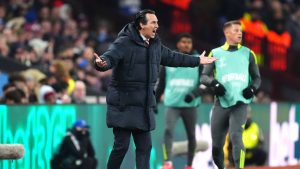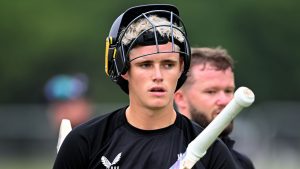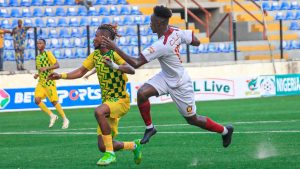How long interview period changed course of NHL free agency


Artemi Panarin did not have to imagine what he might look like in a New York Rangers uniform.
His likeness in Rangers blue adorned the giant video screens at Madison Square Garden with the message “Welcome Artemi” a full four days before he signed with the team.
“There was a moment where I just sat down for 10 minutes and really thought about it,” Panarin said, “and my heart told me that New York would be the better place for me.”
Free agency in the NHL this season had surprises, as it always does, and there was a major factor that went somewhat under the radar: The post-draft “interview window” for teams to talk with free agent targets was the longest in its short history. It opened June 23 and went right up until the signing period opened July 1, giving it the biggest impact since the window was added to the league calendar in 2014.
Some executives hated it, but the extended chance to wine and dine played a big role in a number of deals — from the Dallas Stars landing veterans Joe Pavelski and Corey Perry to the New York Islanders moving on from standout goalie Robin Lehner.
“It was a long week,” Perry said. “There was a lot of phone calls and just feeling out teams and seeing where they are, seeing what they might have as a plan of attack for next season. I got to ask questions, they told me what they think. It was an eye-opener, not ever going through it, but it was a fun process.”
Florida general manager Dale Tallon said it was not much fun to go from the draft right into a week of free agent conversations — “I hate this week, to tell you the truth,” he said — but it didn’t turn out so bad: The Panthers signed top goaltender Sergei Bobrovsky, winger Brett Connolly and defenseman Anton Stralman .
Free agency for years was a land rush at noon July 1 and perhaps the frenzied pace of negotiations contributed to some ill-fated contracts and bad fits. With more time, many contracts were agreed to before free agency began, similar to how things work in the NFL and NBA. NHL Deputy Commissioner Bill Daly said each year the league sends a memo to its clubs reminding them that deals cannot be signed until July 1 but he was not concerned about how the process went this time.
“I think it’s more an evolution of how clubs, agents and players have handled (the interview period) than anything else,” Daly said.
New Jersey Devils GM Ray Shero, assistant Tom Fitzgerald and coach John Hynes held a 90-minute conference call with winger Wayne Simmonds and agent Eustace King before signing Simmonds for $5 million . And Pavelski got to tour Dallas with Stars captain Jamie Benn and team executive Tom Holy, a familiar face from San Jose.
“To go spend a little time just kind of casually, you know how things kind of come up organically, it was just nice to kind of hang out and spend a little bit of time,” Pavelski said. “As a player, teammates definitely come into a big part of recruiting, I think. But it’s one of those things does the fit, do you feel comfortable around different personalities.”
Panarin knew all about Rangers President John Davidson from their time together in Columbus. But the former head of the Blue Jackets‘ hockey operations department believes he only had to remind the Russian winger during his visit about all the things that drew him back to New York.
“He’s made it very vocal that he’s always wanted to be in a big city, and there’s no bigger city than New York,” Davidson said. “In talking to us, (he) talked about how he wants to win. He actually talked about Mark Messier and what Mark Messier did with the Rangers to get into the winning part of the business.”
Seeing Messier’s No. 11 and the 1994 Stanley Cup champions banner at Madison Square Garden didn’t hurt. But it was away from the rink that Panarin’s connection to the Rangers became abundantly clear and led to him taking less money than the Islanders, Blue Jackets and Panthers offered .
“You could sense his enthusiasm for the Rangers, for the big city, for the big stage,” Rangers GM Jeff Gorton said. “His knowledge of the game, his knowledge of our team, it all shined right through. Right away for everybody in the room it was pretty exciting to hear some of the things he had to say.”
The interview period is a two-way street, and the Washington Capitals signed winger Richard Panik in large part because they reached out to him first. Panik waited for other teams to come close to the $11 million, four-year offer as the clock ticked.
“For me, it was really stressful,” Panik said. “It was the best offer I had pretty much from the beginning. They offered me four years. Nobody else did. That was the main reason. That’s why I chose (Washington). I wanted a longer deal, and they were willing to do it right away.”
Plenty of teams had interest in Perry, who signed an incentives-heavy one-year deal with Dallas to prove himself after being bought out by the Anaheim Ducks. The Stars showing him their map to Cup contention and bringing in Pavelski sealed the deal.
“They have everything that I want in a hockey team,” Perry said. “They’re on the verge of putting something really great together. I want to be a part of that.”
Lehner was part of a surprisingly great season with the Islanders, who re-signed forwards Anders Lee, Brock Nelson and Jordan Eberle to bring back almost the same team.
Had it not been for the extra time, Lehner might have reached a deal to stay. Instead, the Islanders moved on to Semyon Varlamov, Lehner learned about the potential downside of the interview period and Chicago benefited from it by signing him to a $5 million, one-year contract.
“It was kind of an ultimatum put in front of me and I took a couple days to think about it,” Lehner said. “When I came back and wanted to make something work, they already went for another goalie. That is the truth.”






